密级: 保密期限:
硕士学位论文
题目: 大规模 MIMO 系统中的混合预编码技术研究
学 号: 2016140309
姓
名:
魏敏
专
业 : 电 子 与 通 信 工 程
导
师:
滕颖蕾
学 院: 电子工程学院
2019 年 5 月 29 日
中国•北京
�
密级:
保密期限:
硕士学位论文
题目: 大规模 MIMO 系统中的
2019 年 5 月 29 日
�
Secret Level:
Confidentiality Period:
BEIJING UNIVERSITY OF
ELECOMMUNICATIONS
POSTS AND
T
Thesis for Master Degree
TITLE: ANALYSIS OF HYBRID PRECODING
SCHEMES FOR MASSIVE MIMO SYSTEMS
Student No.:
Candidate;
2016140309
Min Wei________________
Major: Electronic and Communication Engineering
Supervisor;
Yinglei Teng
Institute:
School of Electronic Engineering
May 29,2019
�
独创性(或创新性)声明
本 人 声 明 所 呈 交 的 论 文 是 本 人 在 导 师 指 导 下 进 行 的 研 究 工 作 及 取 得 的 研 究
成 果 。 尽 我 所 知 , 除 了 文 中 特 别 加 以 标 注 和 致 谢 中 所 罗 列 的 内 容 以 外 , 论 文 中 不
包 含 其 他 人 己 经 发 表 或 撰 写 过 的 研 究 成 果 , 也 不 包 含 为 获 得 北 京 邮 电 大 学 或 其 他
教 育 机 构 的 学 位 或 证 书 而 使 用 过 的 材 料 。 与 我 一 同 工 作 的 同 志 对 本 研 究 所 做 的 任
何贡献均已在论文中作了明确的说明并表示了谢意。
申请学位论文与资料若有不实之处,本人承担一切相关责任。
本人签名:氣
日期:崎 q_______________________
关于论文使用授权的说明
本 人 完 全 了 解 并 同 意 北 京 邮 电 大 学 有 关 保 留 、 使 用 学 位 论 文 的 规 定 , BP : 北
京 邮 电 大 学 拥 有 以 下 关 于 学 位 论 文 的 无 偿 使 用 权 , 具 体 包 括 : 学 校 有 权 保 留 并 向
国 家 有 关 部 门 或 机 构 送 交 学 位 论 文 , 有 权 允 许 学 位 论 文 被 查 阅 和 借 阅 ; 学 校 可 以
公 布 学 位 论 文 的 全 部 或 部 分 内 容 , 有 权 允 许 采 用 影 印 、 缩 印 或 其 它 复 制 手 段 保 存 、
汇 編 学 位 论 文 , 将 学 位 论 文 的 全 部 或 部 分 内 容 编 入 有 关 数 据 库 进 行 检 索 。 ( 保 密
的学位论文在解密后遵守此规定)
本人签名:莫 K
曰期:孓片
导师签名:椿^^~
日期:崎
�
大规模 MIMO 系统中的混合预编码技术研究
摘要
随 着 5G 时 代 的 到 来 , 大 规 模 多 输 入 多 输 出 (multiple-input
multiple-output, MIMO) 技 术 将 逐 渐 替 代 传 统 MIMO 技 术 , 成 为 下 一
代 无 线 通 信 系 统 的 关 键 技 术 之 一 。 随 着 天 线 数 量 的 增 加 , 显 著 提 高 了
频 谱 效 率 和 信 道 容 量 。 但 同 时 也 带 来 了 一 些 挑 战 , 如 射 频 链 路 成 本 问
题 , 导 频 污 染 问 题 等 。 传 统 全 数 字 预 编 码 需 要 射 频 链 路 数 与 天 线 数 量
相 等 , 实 现 成 本 高 昂 。 在 此 背 景 下 提 出 的 混 合 预 编 码 技 术 能 大 大 降 低
所需射频链路数,因而成为当前重要的研究方向。
本 文 对 大 规 模 MIMO 系 统 中 的 混 合 预 编 码 技 术 进 行 研 究 , 从 天
线 结 构 角 度 考 虑 , 创 新 性 地 提 出 了 两 种 不 同 天 线 结 构 的 混 合 预 编 码 设
计 策 略 。 运 用 凸 优 化 和 随 机 优 化 方 法 求 解 优 化 问 题 , 分 析 了 算 法 复 杂
度和收敛性,并通过仿真验证所提算法的性能。论文的具体贡献如下:
1) 提 出 一 种 基 于 混 合 时 间 尺 度 信 道 状 态 信 息 (channel
state
information, CSI) 的 分 组 用 户 混 合 预 编 码 设 计 。 基 于 自 适 应 部 分 连 接
的 天 线 结 构 , 考 虑 天 线 结 构 的 硬 件 约 束 , 最 大 化 所 有 组 中 最 小 的 统 计
信 漏 噪 比 (signal-to-leakage-and-noise
SLNR), 设 计 混 合 预 编
码 优 化 问 题 。 其 中 , 模 拟 预 编 码 根 据 长 时 统 计 CSI 确 定 , 数 字 预 编 码
则 与 实 时 CSI 有 关 , 从 而 降 低 了 CSI 信 令 开 销 。 与 己 有 的 基 于 全 连 接
ratio,
天 线 结 构 和 固 定 部 分 连 接 天 线 结 构 的 算 法 相 比 , 能 看 出 所 提 算 法 可 在
性能,复杂度,CSI 信令开销之间取得很好的平衡。
2) 考 虑 总 功 率 ( 无 线 发 射 功 率 和 硬 件 消 耗 功 率 ) 最 小 化 问 题 ,
提 出 一 种 自 适 应 全 连 接 天 线 结 构 , 能 根 据 优 化 目 标 调 节 模 拟 预 编 码 中
激 活 的 模 拟 移 相 器 (analog phase shifter , APS) 和 射 频 链 路 数 量 , 并
基 于 所 提 天 线 结 构 提 出 一 种 稀 疏 混 合 预 编 码 设 计 。 优 化 问 题 中 考 虑 用
户 平 均 速 率 约 束 , 以 最 小 化 总 功 率 消 耗 为 优 化 目 标 , 同 时 考 虑 了 无 线
发 射 功 率 和 硬 件 消 耗 功 率 , 提 出 一 种 针 对 稀 疏 混 合 预 编 码 的 有 约 束 随
机 连 续 凸 近 似 算 法 , 证 明 了 算 法 具 有 较 好 的 收 敛 性 , 且 相 比 于 已 有 算
法具有功耗低、能量效率高的优势。
关键字:大规模 MIMO 技术 混合预编码 天线结构功率最小化
�
ANALYSIS OF HYBRID PRECODING SCHEMES FOR MASSIVE
MIMO SYSTEMS
ABSTRACT
With the
advent of 5G era , the
conventional MIMO
gradually,
as
next
antennas,
the
of
greatly.
pilot
required
same with
is
precoding
required RF
wireless
the
However,
contamination
chain
that
of
proposed
chains
RF
of
efficiency
technology
the
one
system. With
becomes
communication
energy
the
technology of massive MIMO replaces
which
key
the
channel
some
problem.
fully-digital
the
cost
reduce
to
research
and
in
antennas, which
under
and
also
hardware
conventional
causes
background
an
the
brings
cost
this
becomes
important
the
the
and
to
number
improve
such
the
technologies
increasing
capacity
challenges,
The
precoding
problem. Hybrid
the
of
area.
number
is
number
of
the
Hybrid
precoding
paper. From the
in massive MIMO systems
perspective
has
structure,
antenna
two
been
researched
the
precoding
innovatively.
optimization
complexity
through
follows:
schemes
The
are
and
simulation
on
based
methods
in
of
different
convex
adopted
convergence
results.
solve
analyzed
to
are
The main
of
kinds
are
and
problems.
antenna
structures
the
approximation
optimization
the
contributions
and
performance
of
is
paper
the
hybrid
precoding
scheme
is
1) A mixed-timescale
precoding
hybrid
per-group
optimization
all
problem is
statistical SLNR among
The
minimal
partially-connected
constraints
to
to instantaneous CSI, which reduces the CSI signaling overhead. The
Specifically,
the
the RF
baseband
long-term channel
groups
which
designed
and
based
considers
structure,
structure.
statistics
antenna
antenna
and
the
the
on
to max
on
the
the
precoder
precoder
is
is
in
hybrid
proposed
stochastic
The
verified
as
are
proposed.
the
adaptive
hardware
adaptive
adaptive
�
proposed algorithm is compared with the existing algorithms based on the
shows
fully-connected
achieve
that
between
performance, complexity and CSI signaling overhead.
structures, which
better
partially-connected
algorithm can
and
proposed
antenna
balance
the
a
according
scheme
is
(wireless
problem,
2) Considering
the
total
transmit
an
power
adaptive
structure. Considering
power
consumption) minimization
power
antenna structure is proposed to adjust
chains
to the objective of
hybrid precoding (SHP)
antenna
optimization
consumption,
consumption
approximation
optimization problem.
power
consumption
convergence speed compared to the other existing algorithms.
hardware
and
fully-connected
the active number of APSs and RF
the optimization problem. A sparse
also proposed based on the proposed
users , the
average
at
total
power
hardware
wireless
constrained
convex
the
(CSSCA-SHP)
lower
good
solve
the proposed algorithm has
a
the
A
SHP
It
and
problem
including
power.
for
is
the
aiming
and
successive
stochastic
is
is proved that
transmit
power
proposed
to
minimizing
higher
energy
efficiency
with
data
rate
of
the
Keywords: massive MIMO;
hybrid
precoding;
antenna
structure;
power
minimization
�
目录
目录
............................ .................................. .. .................................................1
L1 研究背景及意义“…..............1
1.2 国内外研宄现状....................................................................................................................
2
1.3 主要研究内容及创新点.......................................................................................................
<5
1.4 论文项目依托................................................................................................................
7
1.5 论文结构安排..................................................................................................................................7
第二章 大规模 MIMO 系统的天线结构及信道模型™, ............................................................. 9
2.3 随机优化在无线通信中的应用...............................................................................................
9
2.1 大规模 MIMO 系统的天线结构..........................................................................................
2.2 大规模 MIMO 系统的信道模型......... .................................................................................. 11
22.1 SCM 信道模型.......................................................................................................... 11
2.2.2 基于几何的信道模型...........................................................................................
12
13
第三章 基于混合时间尺度 CSI 的分组用户混合预编码设计.................................. ........................15
3,1 研究背景........................................ ...............................................................*..........................15
3.2 主要研究内容及贡献....................... *..................... ................................. ......................
.....................................................................16
3.3 系统模型……..... ........... ........................................ .......................... ........................................17
3.3.1 基于有限 RF 链路数的多用户大规模 MIMO 系统................................. ................. 17
3.3.2 基于用户分组的空间信道模型................................................................................. _18
3.4 预编码算法设计........ ........ ...................................................................................................... 19
20
.....20
3.5 自适应部分连接网络和模拟移相器的联合设计 .................................... ..............................22
3.6 算法性能分析...........................................................................................................................
25
3.7 本章小结…................... ................................................. . .......................... ...*...........................28
第四章 功率最小化的稀疏混合预编码设计....................................... .................................................29
29
4.1 研究背景...........................................................................................................................
31
4.2 主要研究内容及贡献....................... ....................................................................................
32
4.3 系统模型...............................................................................................................................
34
4.4 §
4.5 稀疏混合预编码优化问题........................................................................................................... 36
3.4.1 数字预编码的设计............... ...................................................................................
3.4.2 模拟预编码优化问题.............. ..............................................................................
4.6 有约束的随机连续凸近似算法...............................................................................................
4.5.1
36
4.52 目标函数的稀疏光滑近似................................................................................................ 37
38
4.6.1 构造替代函数...................................................................................................................38
4.6.2 CSSCA-SHP 胃 .. ..... ................................................................................................40
4.6.3 算法实践问题...................................................................................................................41
42
4.7J 强收敛条件下的收敛性.........................................................................................
42
4.7.2 弱收敛条件下的收敛性................................................................................................. 44
4.7 算法收敛性分析.......................................................................................................................
�

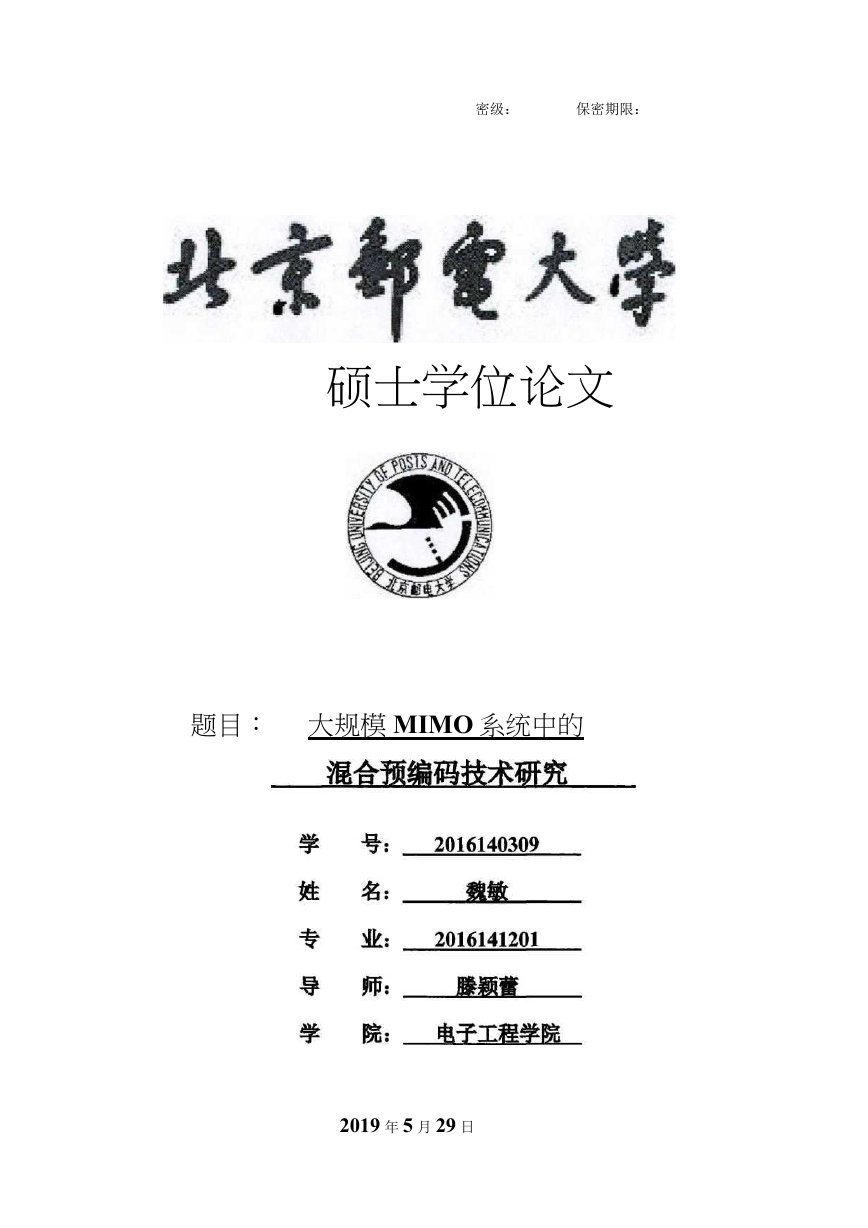
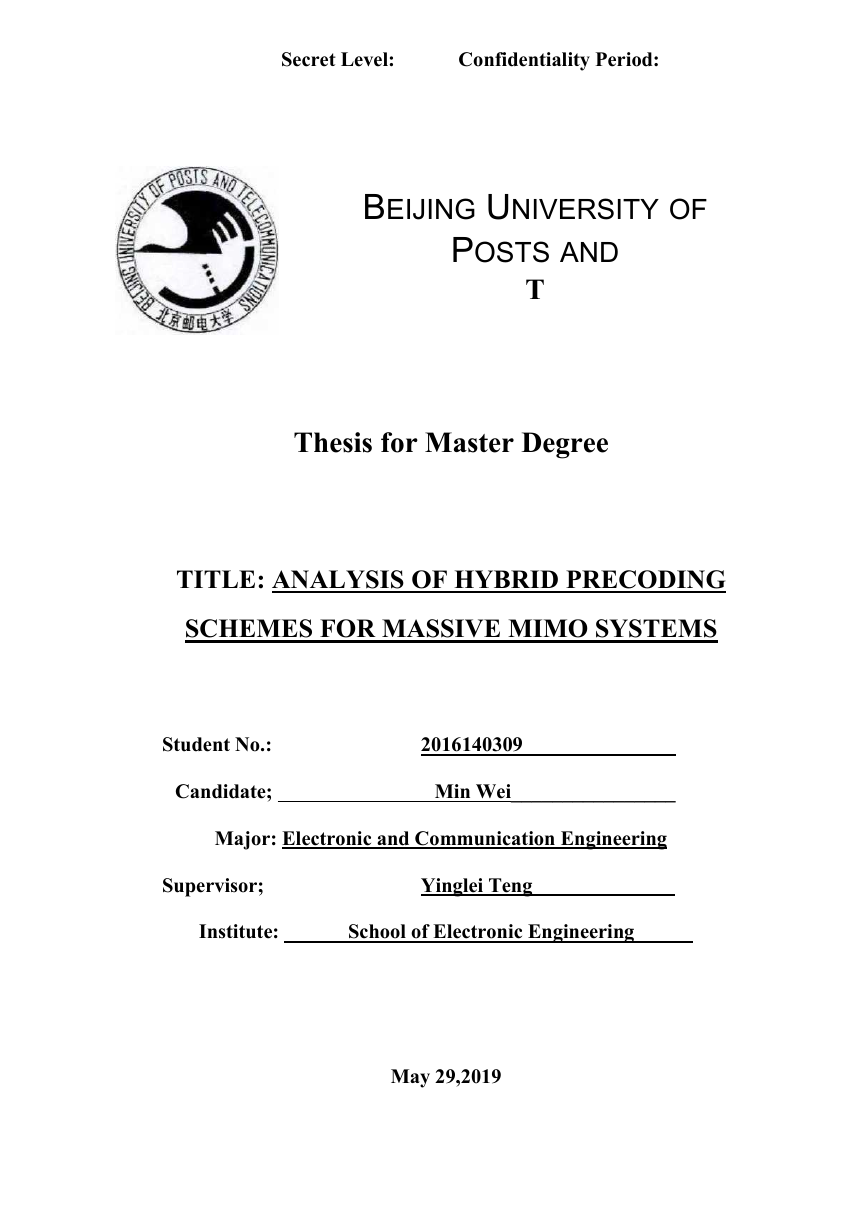

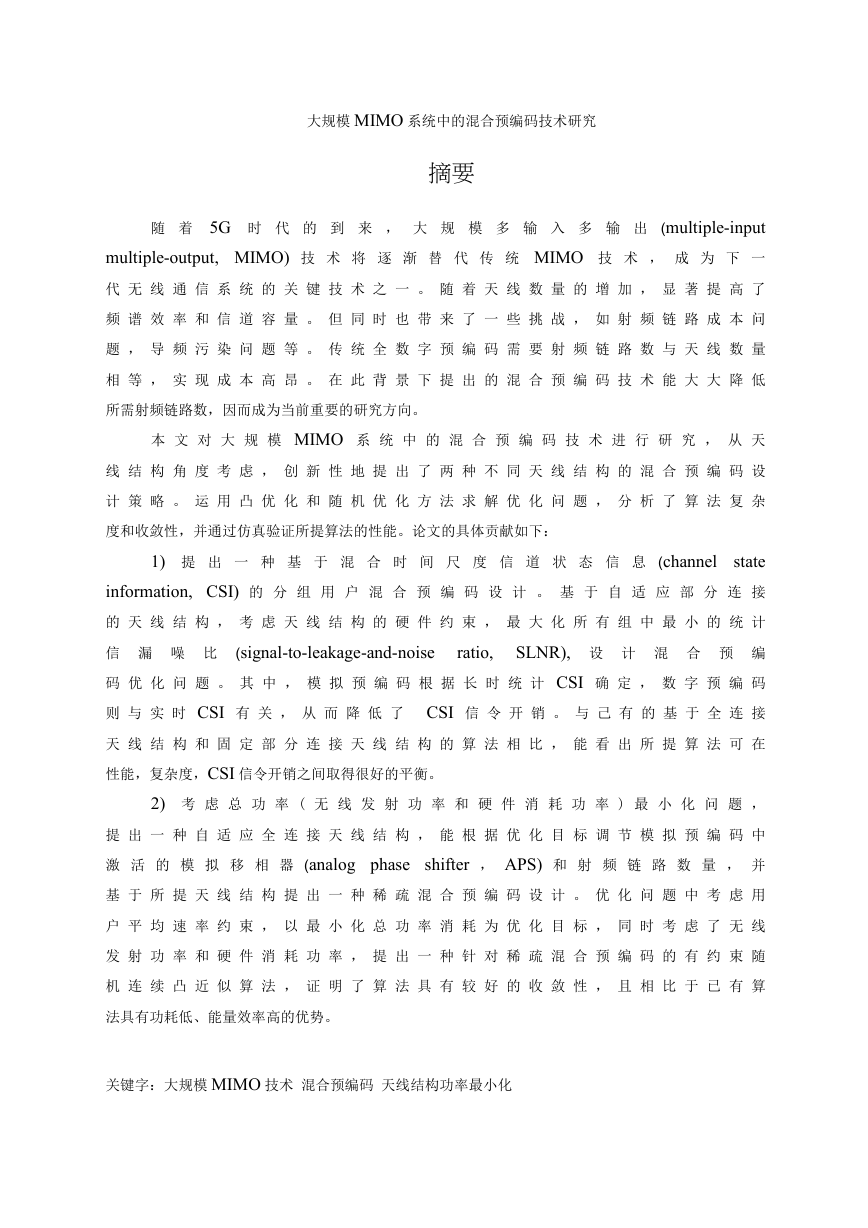
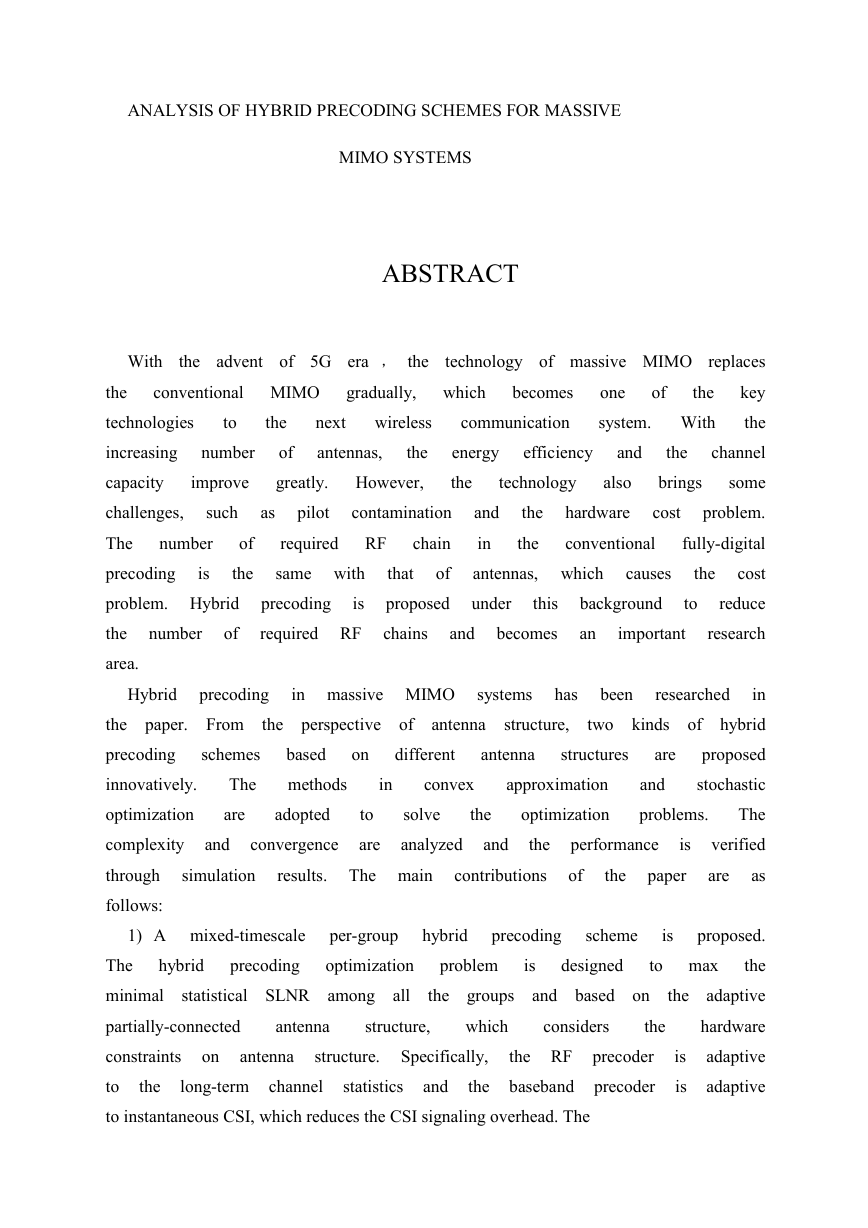
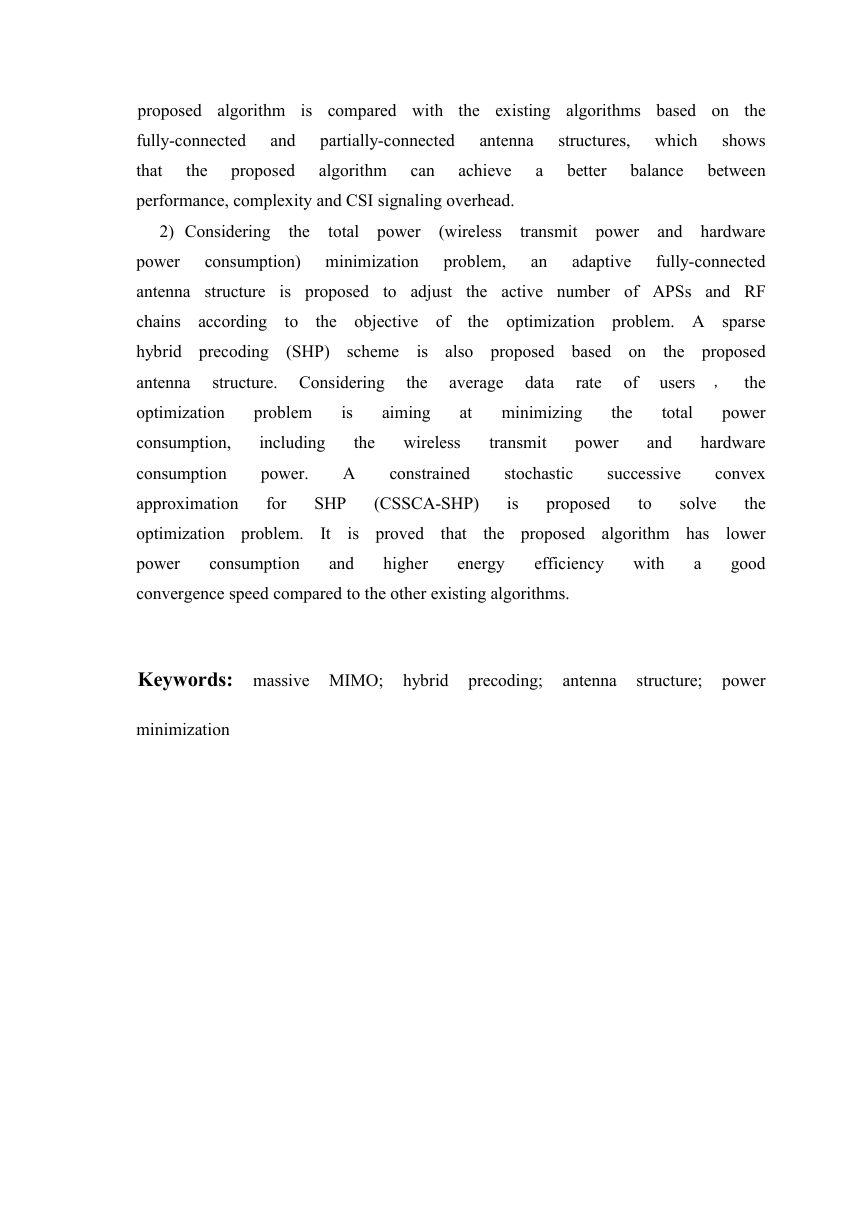
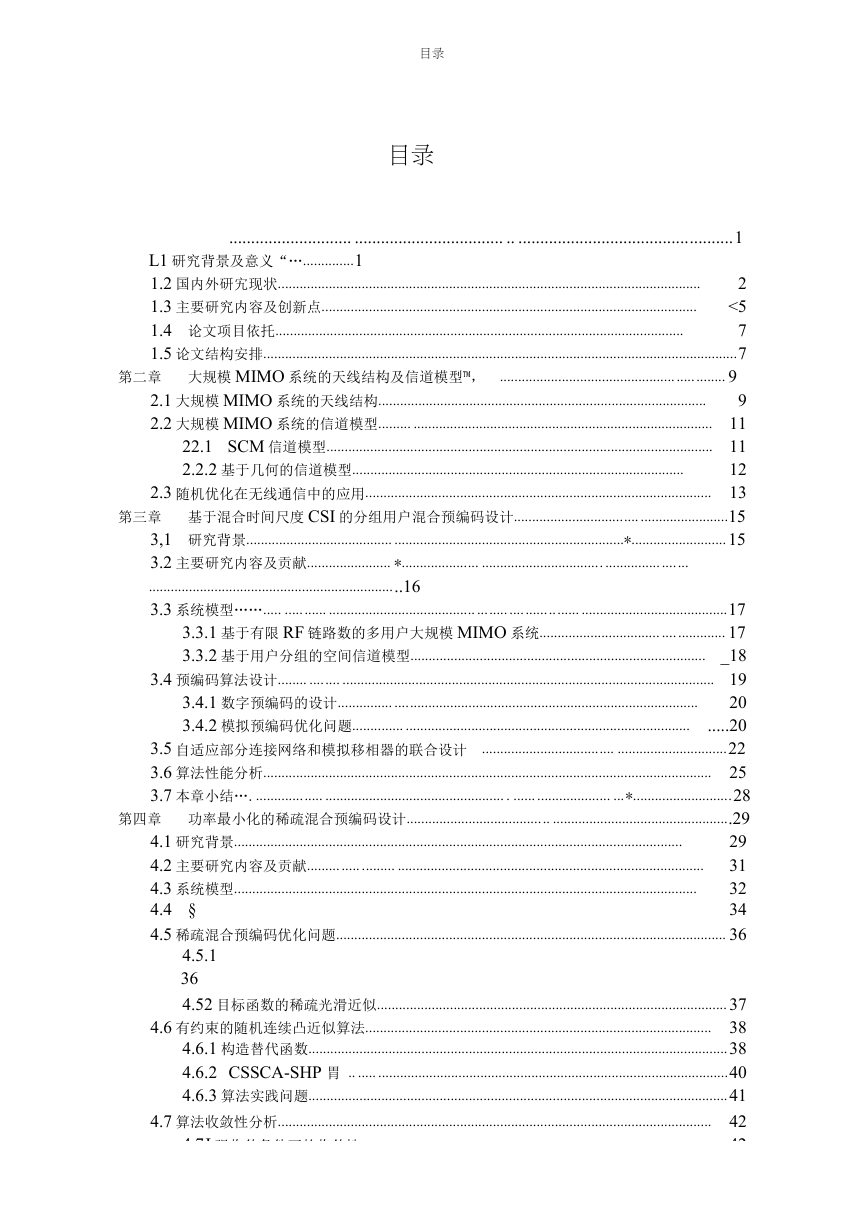








 2023年江西萍乡中考道德与法治真题及答案.doc
2023年江西萍乡中考道德与法治真题及答案.doc 2012年重庆南川中考生物真题及答案.doc
2012年重庆南川中考生物真题及答案.doc 2013年江西师范大学地理学综合及文艺理论基础考研真题.doc
2013年江西师范大学地理学综合及文艺理论基础考研真题.doc 2020年四川甘孜小升初语文真题及答案I卷.doc
2020年四川甘孜小升初语文真题及答案I卷.doc 2020年注册岩土工程师专业基础考试真题及答案.doc
2020年注册岩土工程师专业基础考试真题及答案.doc 2023-2024学年福建省厦门市九年级上学期数学月考试题及答案.doc
2023-2024学年福建省厦门市九年级上学期数学月考试题及答案.doc 2021-2022学年辽宁省沈阳市大东区九年级上学期语文期末试题及答案.doc
2021-2022学年辽宁省沈阳市大东区九年级上学期语文期末试题及答案.doc 2022-2023学年北京东城区初三第一学期物理期末试卷及答案.doc
2022-2023学年北京东城区初三第一学期物理期末试卷及答案.doc 2018上半年江西教师资格初中地理学科知识与教学能力真题及答案.doc
2018上半年江西教师资格初中地理学科知识与教学能力真题及答案.doc 2012年河北国家公务员申论考试真题及答案-省级.doc
2012年河北国家公务员申论考试真题及答案-省级.doc 2020-2021学年江苏省扬州市江都区邵樊片九年级上学期数学第一次质量检测试题及答案.doc
2020-2021学年江苏省扬州市江都区邵樊片九年级上学期数学第一次质量检测试题及答案.doc 2022下半年黑龙江教师资格证中学综合素质真题及答案.doc
2022下半年黑龙江教师资格证中学综合素质真题及答案.doc